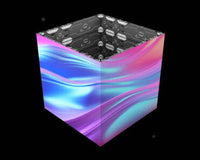Esports is defined as “competitive tournaments of video games, especially among professional gamers.” That simple description belies the segment’s size: By 2023, more than 30 million viewers will be watching these games every month — and not just on YouTube. In fact, viewing venues the size of “physical” sports arenas are creating a demand for professional integration and gear that meets esports’ technological needs. There are smaller installations, too, from labs to training venues, and we’ll explore the requirements of each. From university campuses to casinos, esports venues are popping up everywhere.
Simply put, esports has emerged as one of the most in-demand applications that tie together a multitude of technologies into a single experience in real-time for the gamers, moderators, and spectators.
What’s more (as we’ll see later in this series), those technologies are remarkably similar to what’s needed in a host of other applications in the corporate, educational, and governmental segments.

Who’s Playing?
Esports often takes the form of organized, multiplayer video game competitions, particularly between professional players, individually or as teams. Although organized competitions have long been a part of video game culture, these were largely between amateurs until the late 2000s, when participation by professional gamers and spectatorship in these events through live streaming saw a large surge in popularity. By the 2010s, esports was a significant factor in the video game industry, with many game developers actively designing and providing funding for tournaments and other events.
What You’ll Need
The user experiences regarding esports functionality are more “mission-critical” than in standard applications because the experience is in real-time. Near-zero latency is a core aspect of the performance.
You’ll need, for example:
-
Keyboard, mouse, and joystick controls that can be immediately processed. These devices provide the front-end control over the game itself that determines decisions that need to be made while playing.
-
Advanced processing of display refresh rates to ensure smooth motion on the screen. That motion is directly tied to the reactive decisions that a gamer needs to make.
-
Multi-source, multi-format routing.
-
Advanced integration with mics, speakers, multi-displays, capture, streaming services, and so on.
-
Multi-user environments where teams and individuals only need an intuitive experience to use the system, requiring little to no training.
-
An experience that gives users control over what games they prefer to watch publicly, as well as audio levels, lighting, climate, and supporting devices such as cameras and displays.
-
A backend management platform giving IT managers complete visibility into the application and enabling prescriptive insights to keep the system running at optimal levels.
As a result, they require higher levels of planning to define processing speed, interoperability, bandwidth, signal routing reliability, security, and integrity and device management for uptime. This will ensure the ultimate experience for gamers, moderators — and even spectators.

If you’re interested in learning more — including descriptions of the various venues, small to large, and their technological needs — see Crestron’s new eBook, “Planning for the Ultimate Esports Experience.” Download the full copy here.
Read more: Esports Part Two — Where Are Esports Played?
Read more: eSports Part Three - Factors Driving the Ultimate Esports Experience






